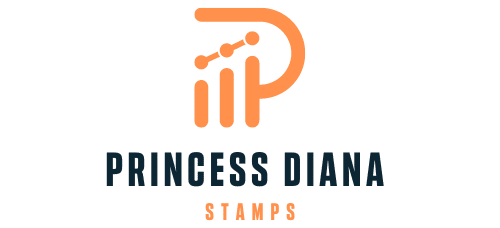What Are the Safety Protocols for Using Nanotechnology in UK’s Food Industry?

In a world enamoured with technology, the food industry is not far behind. In particular, nanotechnology, the science of manipulating matter on an atomic, molecular, and supramolecular scale, is revolutionising the way we process, package, and consume food. However, its rapid advancement raises significant health and safety concerns.
As consumers, you must understand how the UK’s food industry utilises this technology and the safeguards in place to protect your health. This article offers a detailed review of the safety protocols for using nanotechnology in the food industry, drawing on information from trusted sources like PubMed, Google Scholar, and CrossRef.
En parallèle : How Can Electric Bikes Revolutionize Commuting in the UK’s Hilly Cities?
The Application of Nanotechnology in the Food Industry
Nanotechnology promises to transform the food industry. Using nanoparticles and nanomaterials, it enables the development of innovative food products and packaging solutions.
Firstly, nanotechnology allows the creation of nano-enhanced foods. By manipulating molecules and atoms, scientists can enhance the nutritional content of food, improve its taste and texture, and extend its shelf life. For instance, active nanoparticles can be used to encapsulate vitamins or probiotics, ensuring their stability and increasing their bioavailability.
A lire également : What’s the Future of In-Store Retail Technology in the UK Post-Pandemic?
Next, nanotechnology also contributes to food packaging. Nanomaterials embedded in packaging materials can create active and intelligent packaging systems. These systems can detect and respond to changes in food quality, notify consumers of product freshness, and even release preservatives to extend product shelf life.
Safety Concerns Regarding the Use of Nanotechnology in the Food Industry
Despite its apparent benefits, nanotechnology’s use in the food industry is not without its issues. The small size and high reactivity of nanoparticles can lead to unpredictable interactions with biological systems, which may pose potential health risks.
As nanoparticles can easily cross biological barriers (like skin or lungs), they may have direct access to cells, tissues, and organs that are usually protected. This could potentially cause damage or induce toxic reactions. Moreover, the long-term health effects of consuming nano-enhanced foods or using nano-based packaging are still unclear.
There is also the potential risk of environmental contamination. Nanoparticles used in food production or packaging could end up in waste streams and eventually find their way into the environment, with potential adverse effects on ecosystems.
Safety Protocols and Regulations for Nanotechnology in the UK’s Food Industry
Given the potential risks, there is a stringent regulatory framework in place to ensure the safe use of nanotechnology in the UK’s food industry. This involves various agencies working together to review scientific evidence, conduct risk assessments, and develop robust safety protocols.
The primary body responsible for the safety of nanotechnology in food and packaging is the UK Food Standards Agency (FSA). The FSA conducts assessments of the safety of nanomaterials and their applications in food and packaging, using scientific evidence from databases such as PubMed, Google Scholar, and CrossRef. If a product is deemed safe, it is approved for use. If not, it is either rejected or further studies are required.
Another crucial part of the safety protocols is post-market monitoring. This is carried out to identify any unforeseen risks that may emerge once a nano-enhanced product is launched in the market. If any issues arise, the product can be recalled, and necessary steps are taken to protect public health.
The Role of Research in Enhancing Nanotechnology Safety
Continuous research plays a significant role in enhancing the safety of nanotechnology in the food industry. Scientists around the world are working tirelessly to understand how nanoparticles interact with biological systems and the environment.
Institutions, scientists, and researchers worldwide are encouraged to publish their findings on platforms like PubMed, Google Scholar, and CrossRef. This facilitates the sharing of knowledge and information, fostering a collaborative approach to improving nanotechnology’s safety protocols in the food industry.
Research also helps in the development of advanced methods for detecting and characterising nanoparticles, which is crucial for risk assessment. Moreover, it aids in the design of safer nanomaterials and applications, thereby contributing to the development of best practices for nanotechnology use in the food industry.
Public Awareness and Understanding of Nanotechnology Safety
Finally, public awareness and understanding play a crucial role in ensuring the safe use of nanotechnology in the food industry. You, as consumers, have a right to know if the food products and packaging you use are safe.
To foster transparency, all nano-enhanced food products and packaging are required to be clearly labelled under UK law. This allows you to make informed decisions about the products you purchase.
Moreover, the FSA and other government bodies regularly publish information about the safety of nanotechnology and its applications in food and packaging. This information is readily available on their websites and other platforms, accessible to anyone interested in understanding nanotechnology’s safety protocols and regulations in the food industry.
In conclusion, while nanotechnology presents exciting opportunities for the food industry, the potential risks cannot be overlooked. Stringent safety protocols and regulations, continuous research, and public awareness are crucial for ensuring its safe and responsible use in the food industry.
Regulatory Bodies and Specific Guidelines for Nanotechnology in the UK’s Food Industry
Beyond the efforts of the Food Standards Agency (FSA), other regulatory bodies and guidelines contribute to the safety protocols for nanotechnology in the UK’s food industry. The European Food Safety Authority (EFSA) is another influential organisation that provides input on the risk assessment of nanomaterials in food and food packaging. Their findings, publicly available on platforms like PubMed, Google Scholar, and CrossRef, are instrumental in shaping safety regulations across the United Kingdom.
Among these guidelines is the necessity for a comprehensive risk assessment before a nano-enhanced product can enter the market. This involves a thorough examination of the nanomaterial including its origin, structure, size, shape, and potential for aggregation. Additionally, the risk assessment considers the product’s intended use, the level of consumer exposure, and the method of disposal after use.
Moreover, the precautionary principle is often applied in the regulation of nanotechnology in the food industry. This principle argues that if an action or policy has the potential to cause harm to the public or the environment, in the absence of scientific consensus, the burden of proof falls on those advocating for the action or policy. In the context of nanotechnology, this means that food companies employing nanotechnology-based solutions must prove their safety.
Furthermore, there are specific regulations in place for food packaging materials. Nano-enabled packaging must comply with the Regulations on Materials and Articles Intended to Come Into Contact with Food. These regulations mandate that packaging materials should not transfer their constituents to food in quantities that could endanger human health.
Conclusion: A Balanced Approach to Nanotechnology in the UK’s Food Industry
Nanotechnology is undeniably transforming the food industry, from extending a product’s shelf life to enhancing its nutritional value. However, the application of nanotechnology in the food industry is not without its risks. To ensure food safety, the UK maintains rigorous protocols and regulations, closely scrutinising each nano-enhanced product before it hits the market.
The combined efforts of various regulatory bodies, including the FSA and EFSA, ensure a robust safety framework for nanotechnology. Continuous research, accessible through databases like PubMed, Google Scholar, and CrossRef, plays a crucial role in improving our understanding of nanotechnology, thereby enhancing its safety protocols. Moreover, measures like post-market monitoring and clear labelling provide an additional layer of protection.
Yet, while these protocols are essential, so too is public awareness and understanding. As consumers, staying informed about the safety of nanotechnology and its regulations is key to making informed decisions about the food products we purchase.
In balancing the potential benefits and risks of nanotechnology, the UK’s food industry continues to innovate while prioritising consumer health and wellbeing. This balance will be key to unlocking the full potential of nanotechnology, driving forward a new era of food science that is both exciting and safe.
